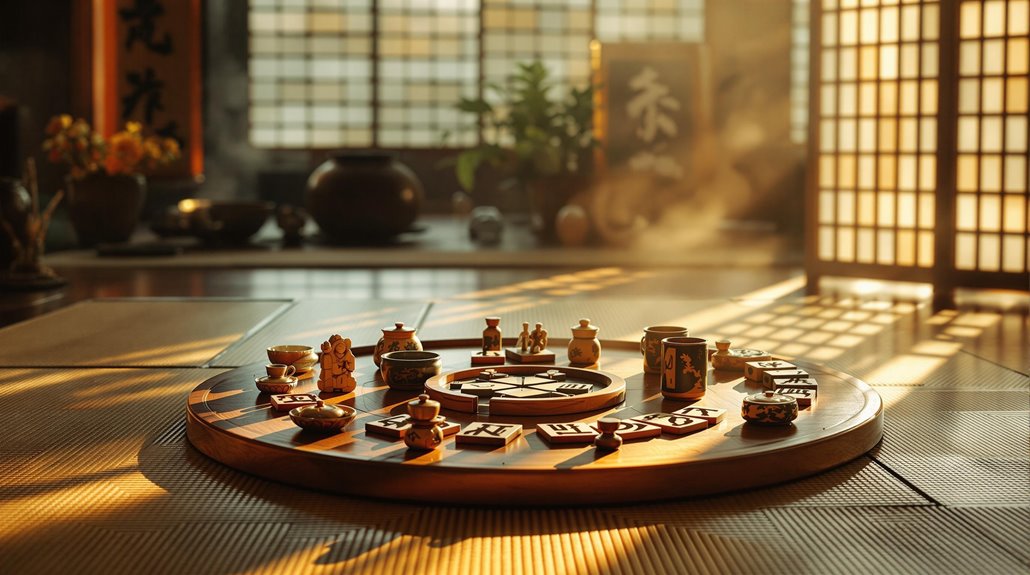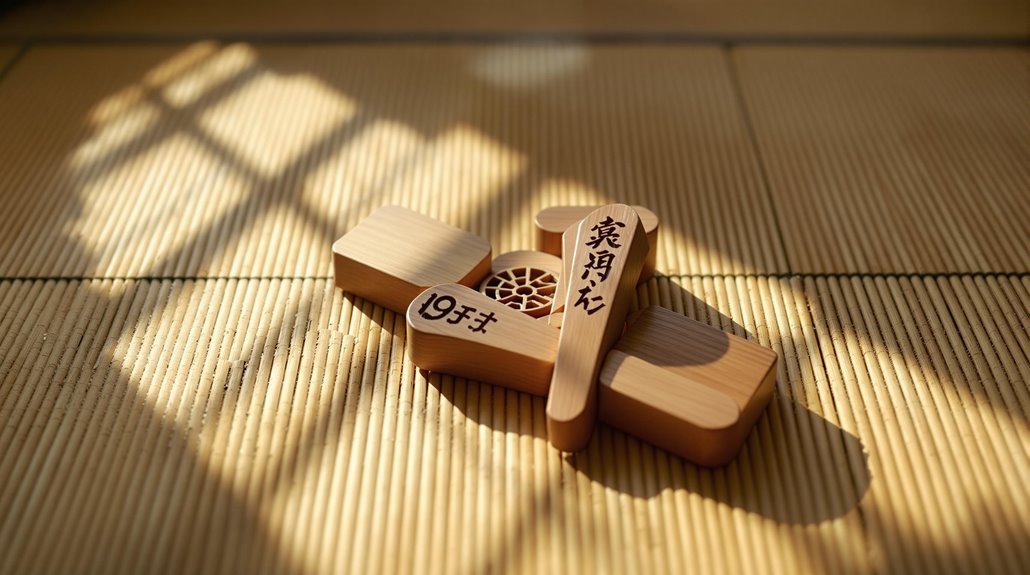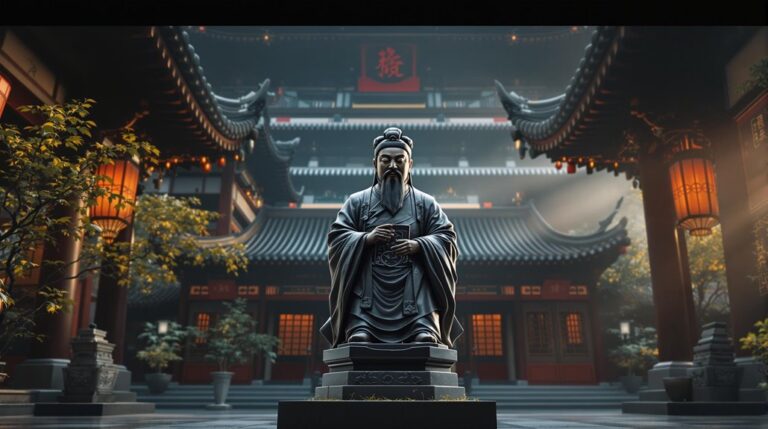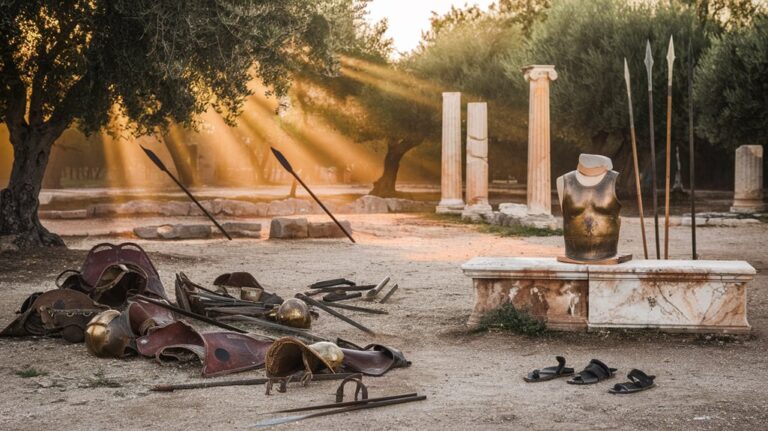Rock, Paper, Scissors: The Murky Past of the World’s Go-To Game
You've played it to settle disputes, you've used it to make decisions, and you've probably never questioned its origins. Rock, Paper, Scissors isn't just a simple hand game—it's a cultural phenomenon with roots stretching back to ancient China's Han Dynasty. While today's version involves three basic gestures, the original Chinese game featured a snake, a frog, and a centipede. What transformed this military tool into the world's universal decision-maker? The answer lies in centuries of fascinating cultural evolution.
Ancient Chinese Origins: From Shoushiling to Strategy
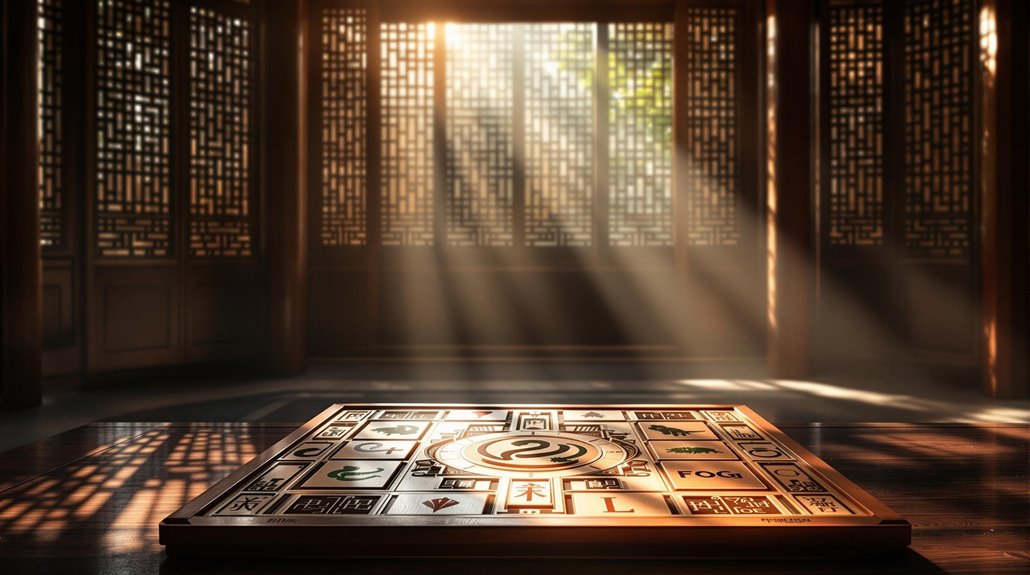
While many consider Rock, Paper, Scissors a simple modern game, its roots trace back to ancient China's Han Dynasty, where it emerged as "shoushiling" around 206 BCE.
This historical gameplay featured three distinctive elements: the centipede, snake, and frog, each represented by specific strategic gestures using different fingers.
You'll find the earliest written records of shoushiling in works like "Wuzazu" and "Note of Liuyanzhai," which detail how players used their thumb for frog, pinky for centipede, and index finger for snake. The game's widespread popularity led to it being enjoyed by generations across Asia.
The game's circular victory pattern was clear: centipede defeated snake with poison, snake ate frog, and frog consumed centipede.
Beyond mere entertainment, you'd be surprised to learn that Chinese military leaders used it for decision-making, while wealthy citizens enjoyed it as a sophisticated pastime. The game later evolved in Japan into sansukumi-ken, a variant featuring a fox, village headsman, and hunter.
The Japanese Evolution: Birth of Jan-Ken-Pon
When the game reached Japan in the 17th century, it underwent a fascinating cultural transformation from its Chinese origins.
You'll find the Japanese adaptations began with "sansukumi-ken," featuring unique variations like "mushi-ken" with its frog, slug, and snake gestures, and "kitsune-ken" using fox, village head, and hunter symbols.
The gameplay evolution eventually led to modern "jan-ken-pon," which has gained remarkable historical significance in Japanese society. Originally, the game depicted a tiger hunting scenario in villages. The game's popularity grew significantly during the Edo and Meiji periods.
Today, you'll hear players shout "Saisho wa guu" and "Janken pon!" during matches, with ties settled by "Aiko deshou!"
The cultural variations extend beyond simple gameplay – it's now deeply embedded in daily decision-making, education, and business.
From settling schoolyard disputes to raising millions in charitable events, jan-ken-pon has become an integral part of Japanese life.
Global Journey: How Asia's Game Conquered the West
Despite its ancient Asian origins, Rock, Paper, Scissors didn't reach Western shores until the early 20th century.
You'll find the first European mention in a 1924 letter to The Times, where the game was described as "zhot." Through cultural exchange with Japan, the game soon caught Europe's attention, with French children adopting it as "Chi-fou-mi," a name derived from Japanese counting words. Much like how people search for deeper meaning, the game's simple rules mask its complex strategic elements. Life lacks purpose in the same way the game has no ultimate winning strategy.
The game's adaptation in North America began when the New York Times introduced it to American readers in 1932.
A year later, Compton's Pictured Encyclopedia documented it as "John Kem Po," describing how Japanese children used it to settle disputes. Ancient samurai warriors used the game for mental training exercises.
As Japan's connections with Western nations grew stronger in the early 1900s, this simple yet strategic game spread globally, transcending cultural boundaries.
Beyond Child's Play: Cultural Impact and Social Significance
Although many dismiss Rock, Paper, Scissors as just a children's game, its cultural impact runs far deeper in modern society. From settling legal disputes to making corporate decisions, this simple game has evolved into one of humanity's most universal cultural rituals.
The game provides immediate outcomes and feedback that make it an effective tool for quick decision-making in various settings. Dating back to ancient Chinese origins, the game began as a practical tool for settling disputes rather than entertainment. You'll find its influence extends beyond mere decision-making. The game serves as a powerful tool for social bonding, breaking down barriers between people regardless of their status or background.
In Japan, where it's known as "Jan-ken," it's woven into the fabric of daily life. In corporate environments, you might see it used to resolve conflicts or make group decisions, while educators harness its power to teach everything from probability to psychology.
The game's enduring appeal lies in its ability to create instant connections while promoting fairness and equality.
The Science Behind the Gestures: Psychology and Game Theory
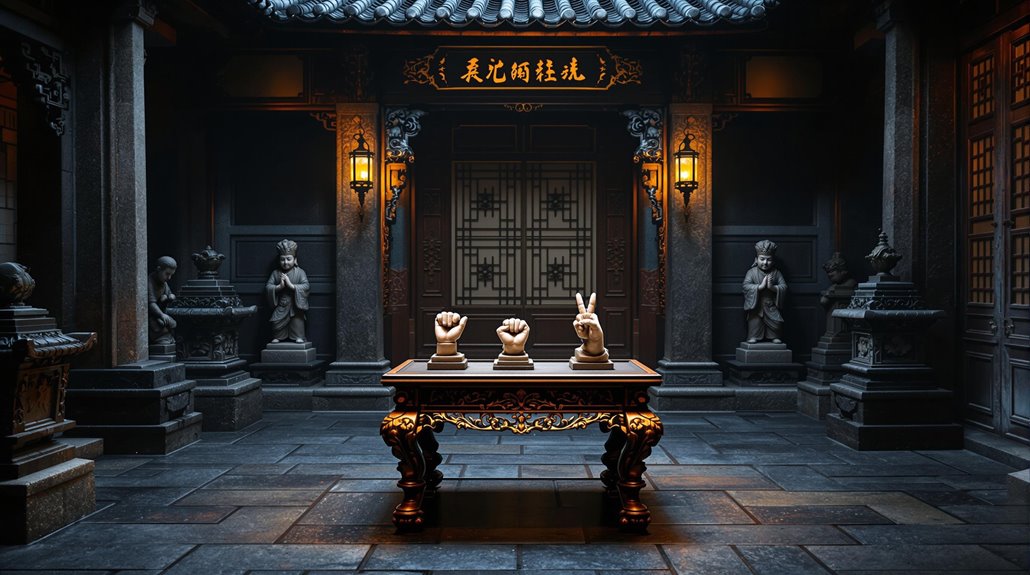
Behind the simple hand gestures of Rock, Paper, Scissors lies a complex web of game theory principles and psychological patterns. When you play, you're engaging in a zero-sum game where ideal strategy demands equal randomization of choices.
Yet gesture psychology reveals that humans aren't great at being random. Research shows you'll likely fall into predictable patterns: repeating moves that won (Win-Stay) or switching after losses (Lose-Shift). These decision biases make you vulnerable to opponents who can spot your tendencies. The Nash Equilibrium suggests that each strategy should appear one-third of the time. The game consistently demonstrates that each choice has equal winning probability.
Studies, like Zhijian Wang's experiment with 72 students, have uncovered persistent cyclic flows in player choices, proving we're not as unpredictable as we think. You might also unconsciously favor "rock" – a common tendency observed across multiple studies.
Understanding these patterns can give you a strategic edge in this deceptively complex game.

